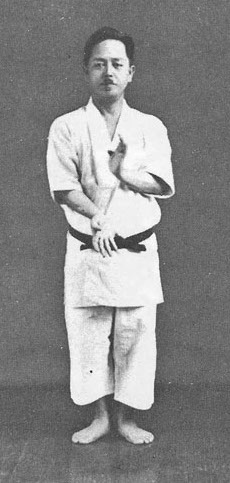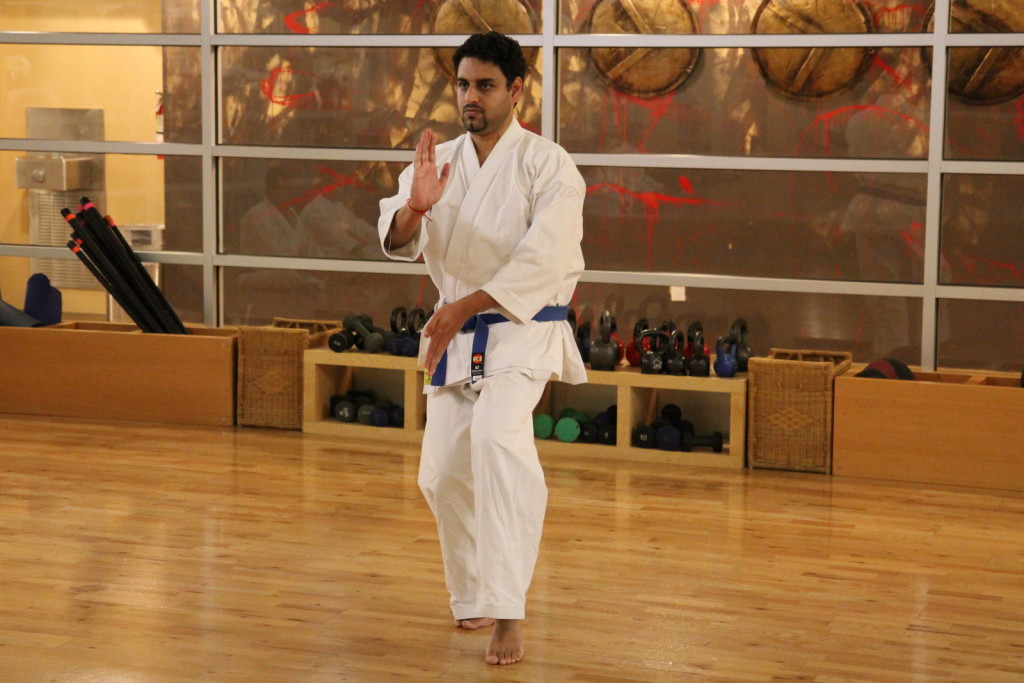
Karate Origin and Lineage
Karate is a martial art developed in the Ryukyu Islands, which are now part of Okinawa, Japan. Strategically situated between the Chinese mainland, Japan and Taiwan, for many centuries the Ryukyu islands saw a constant flow or merchants and travelers. Initially called To-De (“To” 唐 meaning “China” or “T’ang” and “Te” or “De” 手 meaning “hand”) or “China hand”, the martial art of karate initially developed from the transference of different Chinese arts (colloquially, although incorrectly, called “Kung-Fu”) from both northern and southern styles, going as far back as the 14th century. Later, the art was known simply as “Te” (手), i.e., “hand”, and, once it moved from Okinawa to Japan, “Karate” — “Kara” (空) meaning “empty” and “Te” (手) meaning “hand”. Karate began as a fighting system among the Pechin class in the Ryukyu kingdom — the scholar-officials class roughly equivalent to the Japanese Samurai class. Karate developed in Okinawa is uniquely suited for unarmed combat and self defense. While all warriors, today as in the past, receive some empty hand close quarter combat training (think Krav Maga at the Israeli Defense Forces, and similar training at the US or any other militaries), such training is generally taught as an adjunct to training in the most advanced weapons available at the time — swords and spears in the middle ages; guns, tanks, missiles, fighter jets, drones and such today. In Okinawa, on the other hand, an edict against private ownership of weapons existed more or less continuously since 1477 (when Sho Shin, the king of Okinawa, passed that law). This led the citizens of Okinawa to pursue the study of unarmed hand-to-hand self defense with more vigor than in any other country. Such focus on empty hand close quarter combat has contributed to the development of karate as one of the most effective methods of self-defense.
Shito-Ryu Karate
The Shito-ryu (Shitō-ryū) style of karate was founded in 1931 by Kenwa Mabuni, a 17th generation descendant of a famous warrior family (although its roots are far older than that). Named after Mabuni’s two foremost teachers, Ankō Itosu, a prominent teacher of the Shuri-te style of karate, and Kanryō Higaonna, a famous teacher of the Naha-te style of karate, Shito-Ryu combines aspects of both hard and soft, internal and external martial arts. For example, Shito-Ryu features the physical strength and powerful stances as seen in Shuri-te styles such as Shorin-ryu and Shotokan, as well as circular movements and breathing power of Naha-te styles such as Uechi-ryu and Goju-ryu. In 1972, the Aoinagi-Ha style of Shito-Ryu was founded by Dr. Raymond Castilonia, student of Chuzo Kotaka and Richard Kim. The lineage of Aoinagi-Ha Shito-Ryu flows from Kenwa Mabuni, through his sons Kenzo Mabuni and Kenei Mabuni in Japan, Teruo Hayashi in Japan and Chuzo Kotaka in Hawaii.
Karate Training
The karate we teach at Full Potential Martial Arts is heavily influenced by Okinawan Karate, and the Shito-Ryu and Aoinagi-Ha Shito-Ryu styles. Training consists of several main aspects:
- Kihon: practice of techniques and drills
- Kata: formalized sequence of movements which teach various offensive and defensive postures and principals, as well as Bunkai — the application of such techniques to an opponent
- Kumite: structured, as well as free and non-cooperative, reality-based sparring
Our practice is heavily focused on realism, and on practical self-defense. We use the tools devised by Chinese and Okinawan old masters, such as kata and bunkai (applications) to learn how to protect ourselves and our loved ones.
We also practice conditioning exercises, also known as hojo undo, for strengthening our bodies and soul, and incorporating traditional as well as modern exercise and fitness theory.
Okinawan Karate is known for its effectiveness, and attending our martial arts classes regularly will give you a high level of proficiency in self defense. Try our karate classes, taught at Full Potential Martial Arts’ beautiful dojo in the Carmel Valley neighborhood of San Diego, CA 92130.

